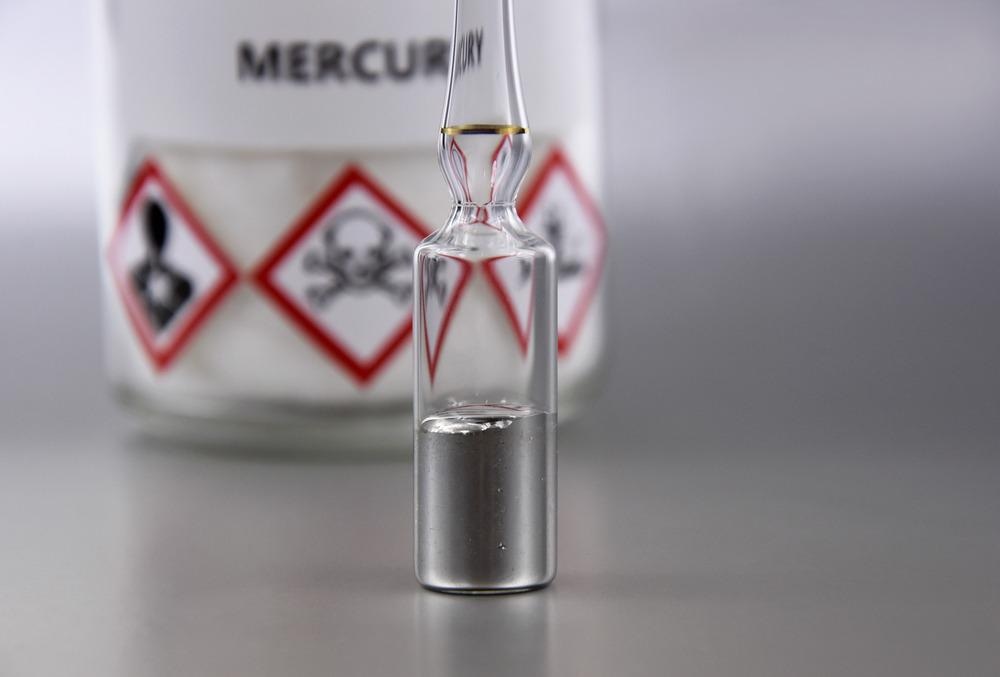Mercury ion (Hg2+ ) is a heavy metallic contaminant that can compromise water quality and damage human health. Therefore, the precise detection of Hg2+ has become a significant research area. Developing a unique fluorescence "OFF-ON" sensing technique for Hg2+ based on synthesized gold nanoparticles (GNPs) is the topic of a recent study published in the journal Chemosphere.

Study: A novel fluorescent “OFF-ON” sensing strategy for Hg (II) in water based on functionalized gold nanoparticles. Image Credit: BeataGFX/Shutterstock.com
Mercury Ions (Hg2+ ): A Water Pollutant and Major Health Concern
Heavy metal exposure can have severe biological toxic effects, such as lead, arsenic, mercury, and copper, and can be carcinogenic and dangerous for human health.
Mercury ions (Hg2+ ) may cause major health issues. Even minute levels of mercury ions may induce serious disorders, including brain damage and cognitive impairments.
The danger of mercury contamination to water ecosystem stability has become a severe issue that must be addressed immediately. Hg2+ quickly penetrates and deposits in many habitats, particularly aquatic settings and aquatic species, and may therefore readily amass in humans through the food supply.
As a result, the introduction of a fast and sensitive technique to identify trace Hg2+ in aquatic ecosystems is not only consistent with the notion of sustainable socio-economic growth but is also critical for public wellbeing and environmental preservation.
Limitations of Conventional Hg2+ Detection Methods
Atomic absorption spectroscopy (AAS), atomic emission spectroscopy (AES), atomic fluorescence spectroscopy (AFS), and inductively coupled plasma emission spectroscopy (ICP-AES) are the traditional techniques for assessing and tracking mercury ions in water.
However, these methods need costly apparatus, can only be used in labs, and cannot be used for real-time or on-site monitoring, making them unsuitable for the realistic sensing of mercury ions (Hg2+ ) in aquatic environments.
Fluorescent Sensors: The Future of Hg2+ Detection Technology
Electrolytic and fluorescent detectors have gained popularity due to their multiple benefits: cheap cost, simplicity of processing, eco-friendliness, and remarkable real-time sensing characteristics.
Fluorescence sensors, unlike AFS, typically detect and recognize objects by fluorescence increase or quenching of the detector itself. In contrast, AFS detects the fluorescence emission levels created by the atomic vaporization of the target item under radiant radiation stimulation.
To improve the functional features of these sensors, typical fluorescence sensing systems are often built using materials like nanomaterials, fluorescent nanocrystals, quantum dots, and sustainably grown fluorescent dyes.
Gold Nanoparticles (GNPs) for Fabrication of Fluorescent Sensors
Nanomaterials have demonstrated exceptional promise for fluorescent detection, drug delivery, biomedical imaging, and other domains. Gold nanoparticles (GNPs) distinguish themselves from other nanomaterials due to their distinct qualities, including durability, surface texture, conduction, optical properties, and solubility in water.
GNPs can be manufactured using easy and environmentally friendly procedures, and the particulate size and shape of GNPs can be modified using various approaches to alter the photoelectric properties. Because of these properties, GNPs can mix with a range of ligands to build a particular sensing substrate to identify multiple harmful objects.
A Novel Fluorescence “OFF-ON” Sensing Strategy for Hg2+
In this study the researchers created a new "OFF-ON" sensing technique for sensitive and selective identification of Hg2+ . This was determined by the distinctive optical features of GNPs and the fluorescence principle of an organic dye termed rhodamine 6G derivate (Rh6G2),
GNPs and Rh6G2 were linked using the self-assembly approach and the Schiff bases process using the sulfhydryl and amino groups. The suggested sensing approach was applied to detect mercury ions in actual water samples to further investigate its practical applicability.
Important Findings of the Study and Future Perspective
Several characterization techniques indicated that the suggested Hg2+ sensing technology had high dispersion, a restricted size variation, and outstanding fluorescence characteristics. The active molecules on the interface serve a role in the stability of GNPs in a complex environment and offer a specialized pathway for catalytic degradation of the target.
When the sensing technique was used to detect Hg2+ in various complex water environments, the results were satisfactory, with average recoveries ranging from 93.4 to 103.0 percent.
More environmentally friendly materials, improved biocompatibility, a larger detection limit, and more accurate detection capability are limitations that need to be resolved in the long term. To conclude, the created sensing system will likely pave the way for new applications, like biological imaging and fluorescence display technologies, and have a high potential for detecting mercury in various situations.
Reference
Li, G. et al. (2022). A novel fluorescent “OFF-ON” sensing strategy for Hg (II) in water based on functionalized gold nanoparticles. Chemosphere. Available at: https://www.sciencedirect.com/science/article/pii/S0045653522016678?via%3Dihub
Disclaimer: The views expressed here are those of the author expressed in their private capacity and do not necessarily represent the views of AZoM.com Limited T/A AZoNetwork the owner and operator of this website. This disclaimer forms part of the Terms and conditions of use of this website.